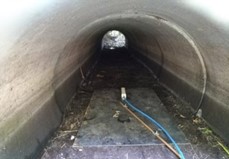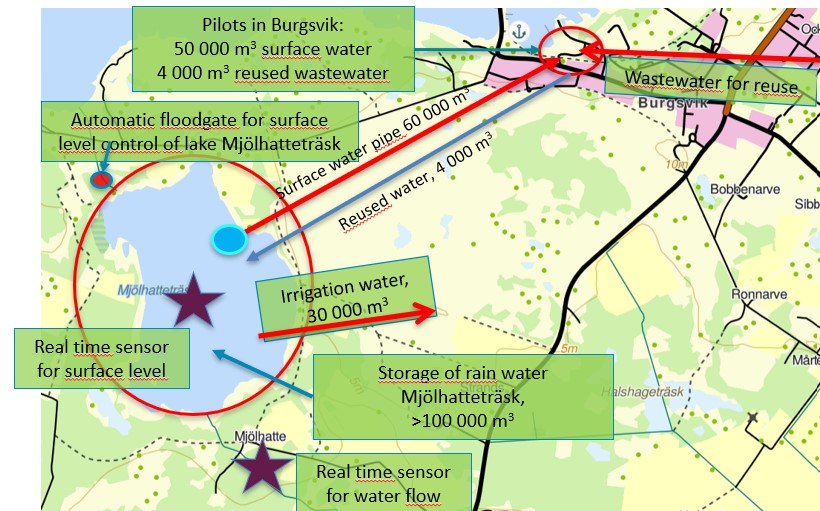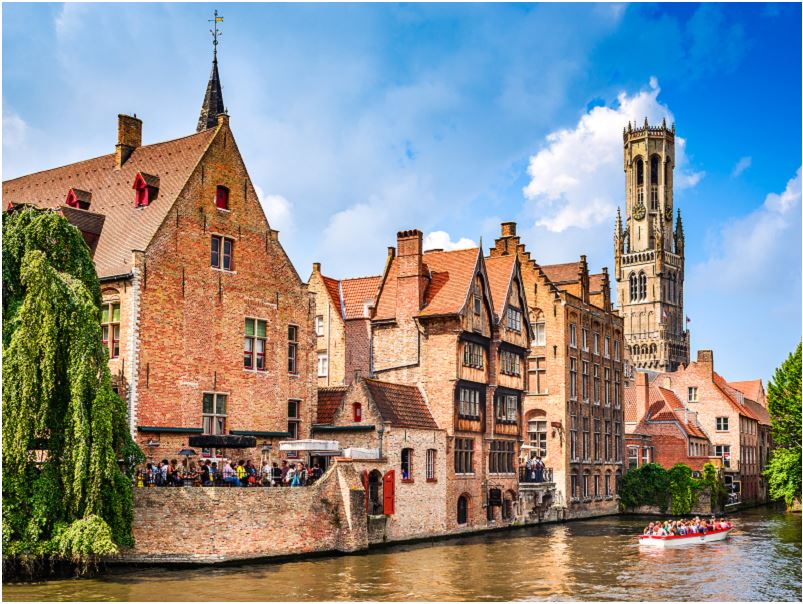
Unique selling points
- Automatization of the data acquisition related to ditches flow as well as the surface water and groundwater levels.
- Avoiding land flooding through rainwater harvesting (1%).
Description of the technology
Automatic floodgates are drainage ditches with IoT (Internet of Things) technology. Ditches collect and drainage rainwater to storage systems and IoT allows to automatically acquire a high number of data related to rainwater harvesting per surface and year; the flow of the ditches and the water level of the natural systems where the water drained by the ditches is stored; water evaporation; water consumption, etc.
A large number of ditches in several parts of the world prevent farmland from being overflooded during spring and summer rains. The automatization of the measurements of the ditches flow, and groundwater and surface water levels contribute to the optimal function of these ditches and the water balance in the area.
The drained water by the ditches can feed storage systems (such as natural ponds and artificial surface dams), can be directly infiltrated to the aquifers or can be also treated and used for several applications.
In the NextGen project, ditches, land areas and storage systems have IoT technology installed measuring flow, groundwater and surface water levels 4 times a day. Water from the ditches feed the natural ponds and artificial surface dams where water is temporally stored. The capacity of the system is around 8500 m3/ha/year of water stored and 7500 m3/ha/year of water recovered.
The simplified diagram of the process is schematized in Figure 1.
Figure 2 shows some images of the inside of the plant.
Flow scheme of the technology

Figure 1. Scheme of the automatic floodgates system used in the NextGen project.
Pictures

Synergetic effects and motivation for the implementation of the technology
- Data acquisition
The automatic floodgates allow to acquire a high number of data related to rainwater harvesting per surface and year; ditches, the flows and capacities of natural ponds and artificial surface dams; water evaporation; water consumption, etc. Therefore, they contribute to generate a wide database with this information highly valuable for the region where they are applied.
- Reduction of the drinking water consumption
By the proposed scheme, the rainwater recovered in the rainy periods is collected by the ditches, and temporally stored in the natural ponds and artificial surface dams for being used in summer period. Thanks to the application of the automatic floodgates the control and automatization of the process is optimized. This contributes to decrease the drinking water consumption from the direct exploitation of the aquifers.
Technology requirements and operating conditions
The following table summarize the requirements of the automatic floodgates system to operate in the most appropriated conditions.
Table 1. Required specifications for the automatic floodgates system obtained from the Testbed Storsudret data at Gotland (ivl, 2021).
|
Parameter |
Units |
Min |
Max |
|
Water volume |
m3 |
0 |
100,000 |
|
Turbidity |
NTU |
0 |
10 |
Key performance indicators
Table 2. KPIs for the automatic floodgates system provided in NextGen, D1.2.
|
Parameter |
Units |
Min |
Max |
|
Percentage of water stored |
% |
50 |
200 |
Links to related topics and similar reference projects
|
Automatic floodgates |
Reference |
|
NextGen |

